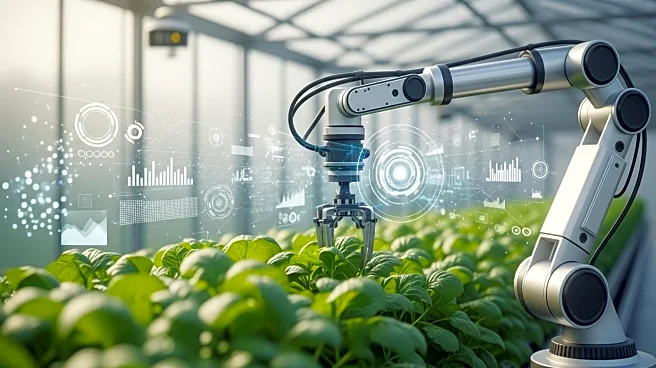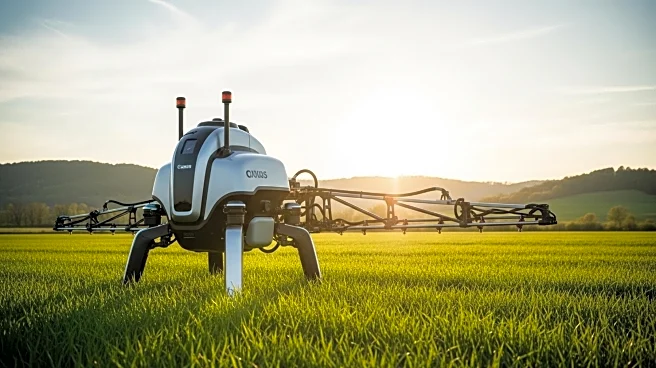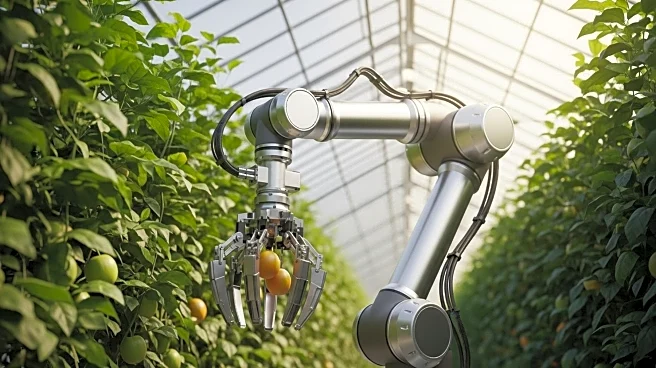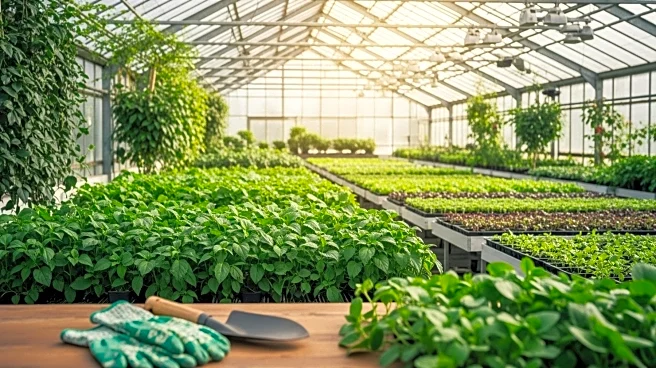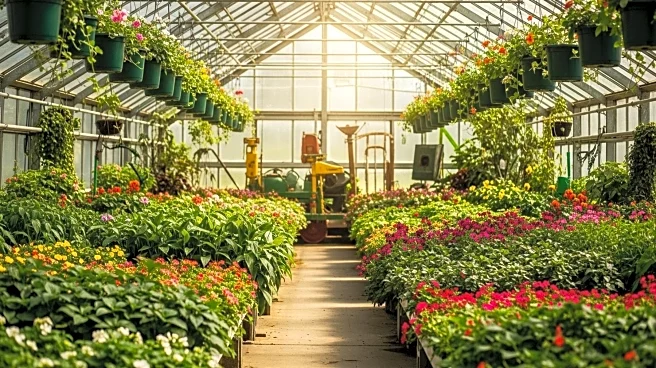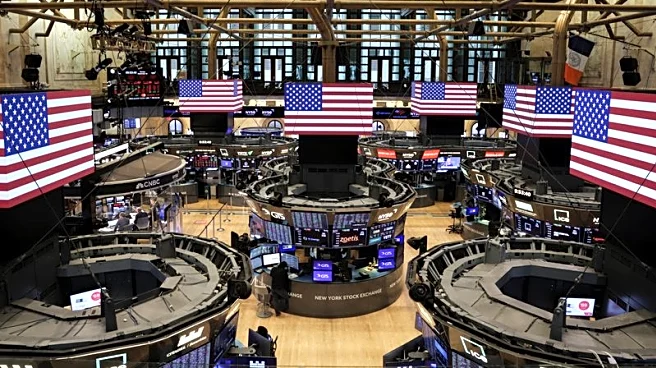What is the story about?
What's Happening?
The AI in Agriculture market in the United States is experiencing significant growth, driven by advancements in robotics and predictive analytics. According to a report by DataM Intelligence, the market size reached $1.7 billion in 2023 and is projected to grow to $8.97 billion by 2031, with a compound annual growth rate (CAGR) of 23.1% from 2024 to 2031. Key developments include the introduction of AI-powered harvesting robots by companies like John Deere and Harvest CROO Robotics, which are being used in large orchards in California and for strawberry harvesting in Florida. These robots utilize AI vision systems to identify ripe produce, aiming to reduce labor costs and address labor shortages. Additionally, precision weeding robots and AI-powered irrigation systems are being deployed to enhance crop health and water conservation. Major players in this market include Microsoft, IBM, and Granular Inc.
Why It's Important?
The expansion of AI in agriculture is crucial for enhancing farming efficiency, productivity, and sustainability in the U.S. By leveraging AI technologies, farmers can optimize resource utilization, reduce costs, and improve yield quality. This transformation from traditional to smart agriculture practices is essential for addressing challenges such as labor shortages and environmental sustainability. The use of AI-driven solutions like precision farming and predictive analytics allows for data-driven decision-making, which can lead to increased productivity and reduced use of herbicides and fertilizers. This trend not only supports economic gains for farmers but also promotes environmental sustainability by minimizing the ecological footprint of agricultural practices.
What's Next?
As the AI in Agriculture market continues to grow, further advancements in technology and increased adoption by farmers are expected. Companies are likely to continue developing and refining AI-powered solutions to address specific agricultural challenges. The focus will likely remain on improving the accuracy and efficiency of these technologies to maximize their benefits. Additionally, collaborations between technology companies and agricultural businesses may increase, fostering innovation and the development of new applications for AI in farming. Policymakers and industry stakeholders may also play a role in supporting this growth through incentives and regulations that encourage sustainable agricultural practices.
AI Generated Content
Do you find this article useful?
